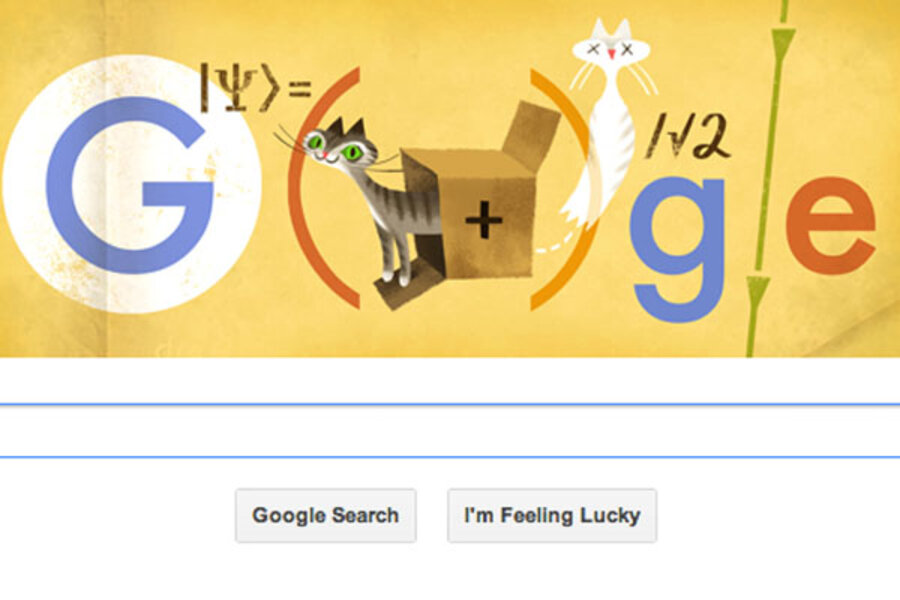Erwin Schrödinger: Why the Google doodle celebrates him and his cat
Loading...
Monday’s Google doodle honors Erwin Schrödinger, the physicist who came up with the groundbreaking, albeit slightly macabre, thought experiment that applied quantum physics theory to something real and all-too-tangible for some: a cat.
Imagine this: A cat is placed inside a box with a flask of poison, a radioactive source, a Geiger counter (to detect radiation), and a hammer for one hour. There is a 50 percent chance that the radioactive source decays within the hour, which would set off the Geiger counter, cause the hammer to smash open the vial of poison, and the cat would die. And there is a 50 percent chance both the poisonous vial and the cat would come out intact. But can the cat be both dead and alive at the same time?
The cat’s status – dead or alive – is only determined once an outside party takes a look inside the box to see how the cat faired. Whereas before, the Copenhagen theory of quantum physics proposed that particles could be in two different states at the same time, Schrödinger extrapolated this theory to something concrete that cannot exist simultaneously as both dead and alive: a cat.
Mr. Schrödinger was born on August 12, 1887 in Vienna, Austria, the only child of Rudolf Schrödinger and Georgine Emilia Brenda. As a child, Schrödinger showed an affinity for both science and the logic of ancient grammar – two interests that would serve him well later on his career, explaining the intricacies in quantum mechanics.
Schrödinger went on to earn his PhD at the University of Vienna, his studies were briefly interrupted by World War I. By 1920, Schrödinger had established a position for himself at the University of Zurich in Switzerland. During this time, the physicist would challenge some of the fundamental theories in his field of study, including the model of atomic orbit. Schrödinger’s research with Paul Adrien Maurice Dirac earned the team a Nobel Prize in 1933 “for the discovery of new productive forms of atomic theory.”
In the 1930s, Schrödinger bounced between different locations in Europe and the United States. He was uncomfortable with Nazi Germany’s ideology, but had trouble finding another place to call home. Schrödinger settled in Ireland at the Institute for Advanced Studies in Dublin in 1940, where he would remain for 17 years. After his retirement in 1955, Schrödinger returned to Vienna. The celebrated scientist and thinker died on January 4, 1961.
While there is no doubt that Schrödinger made significant contributions to the world of quantum physics, perhaps his best-known contribution is that of Schrödinger’s cat, sketched out on Google’s homepage. The slightly mind-boggling idea that something only exists concretely by virtue of being observed, brings to mind a favorite query: If a tree falls in the forest, and no one hears it, has it still fallen?






